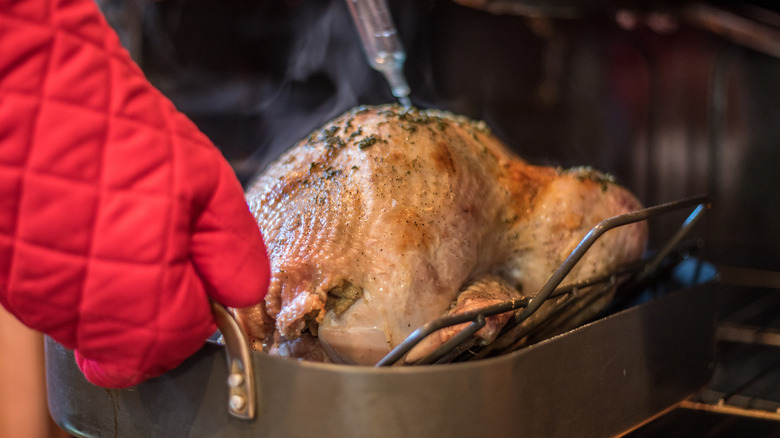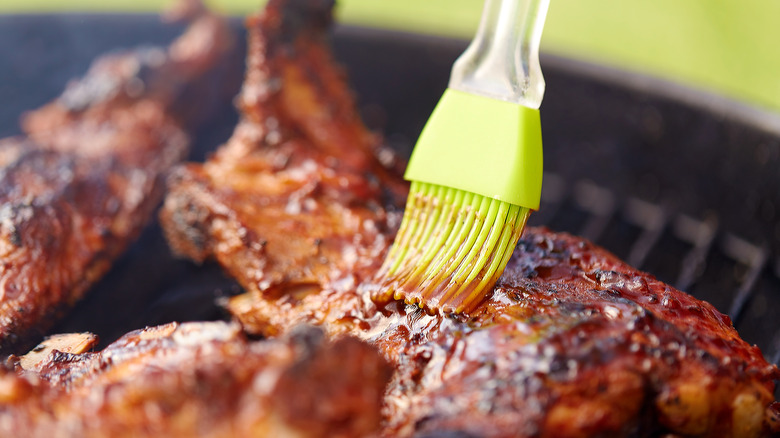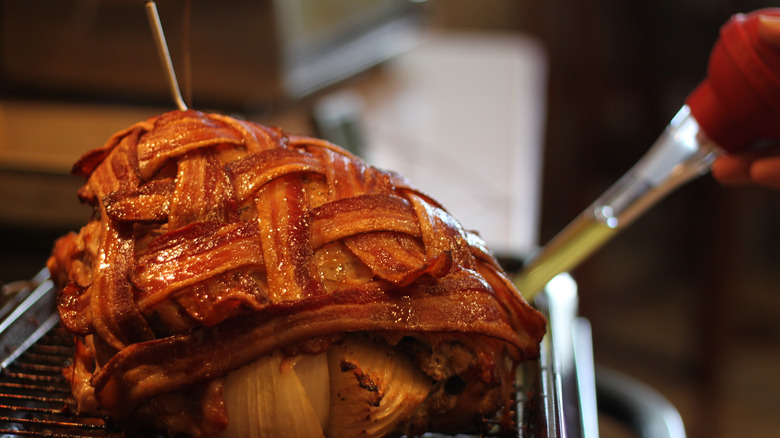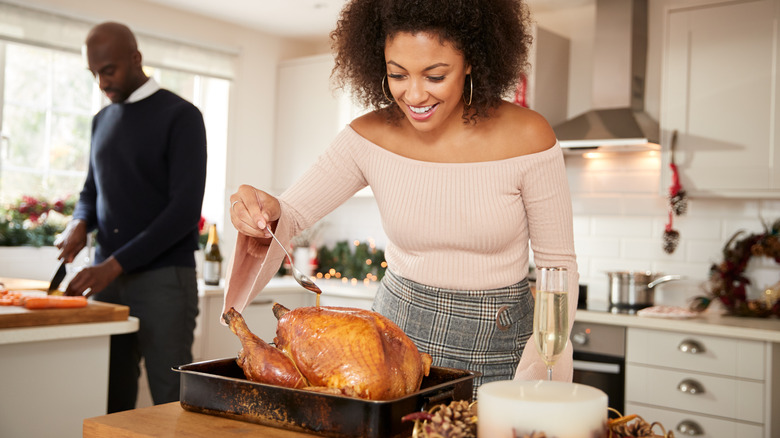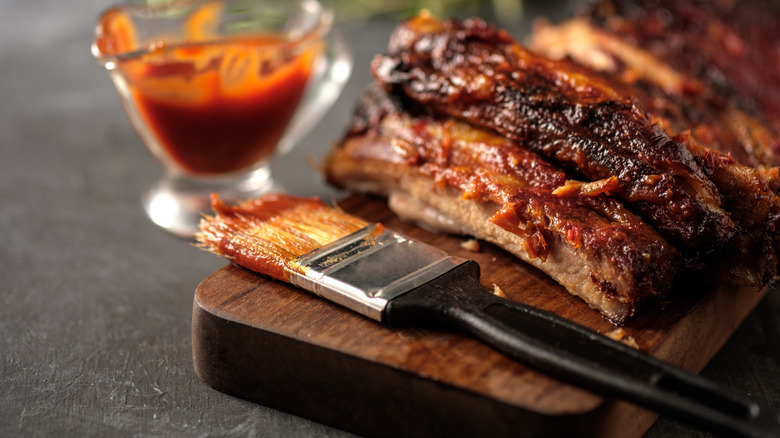Everything You Need To Know About Basting
When it comes to imparting flavor on proteins, there are a variety of ways to do it. You can use a rub, sauce, spice, or even inject it. But, there is one technique that is sometimes used when trying to squeeze every last ounce of flavor into your chicken, steak, beef, tofu, fish, or seitan. That technique is basting. Basting is said to keep your protein moist, so all that time you've taken to make a delicious meal won't go to waste in some dried-out version of what could have been.
The Spruce Eats notes that basting originally came from roasting pork, as pork is a meat that can easily become dry if overcooked even in the slightest. According to Cook's Illustrated, "Basting purportedly keeps meat more moist by cooling the surface and thus slowing down the rate at which the meat cooks." The gentle spooning of liquid fat over the slow roasting protein may give the illusion that it is helping to create a juicy, tender interior, even though it may have little to do with the end result.
How do you do it properly?
After you pick your tool, The Kitchn says that the basting technique is actually quite easily mastered. All you need to do is remove your protein from the oven (closing the oven door immediately after removal to keep the temperature where it should be!) and then coat your meat entirely by using the drippings that have found their way to the bottom of the pan. Make sure to coat it evenly, as well. When you're finished, pop it back into the oven. Just be sure to be as quick as possible, as you won't want your protein to lose heat and cook unevenly in the process.
If you are going to baste, though, keeping an eye on the time is par for the course. Large birds need to be basted every 30 to 45 minutes, while smaller cuts of protein have to be basted as frequently as 15 minutes, The Kitchn says.
What tools are best?
If you are going to baste your protein, it turns out there are an array of tools to help you do so. The Spruce Eats says that you can use a basting brush or basting bulb. The brush, the outlet says, is a bit more versatile as an overall kitchen tool, but a bulb tends to grab liquid a bit better than the brush.
Basting brushes can be found in an array of styles, including silicone and natural style brushes. And, The Spruce Eats notes that every type of basting brush can be used for a different reason. Silicone brushes are best for thick sauces, helping to cover more of the protein and not absorbing any of the liquid, while natural-style brushes are best used with oil and vinegar-based sauces as well as butter.
Basting bulbs grab liquid and bring them up into a tube, using a suction movement. Users can easily see how much liquid is in the tube, but this method also helps to baste more quickly, as it coats the protein upon release. If you don't have either tool on hand, The Spruce Eats says a simple spoon will do the trick.
What's the best liquid for basting?
If you're basting, there are a few different "best" liquids. Some feel that the best liquid is the one that your protein creates itself. This, though, can range depending on what you've dressed it with. While butter or oil can be used solo, there are also an array of spices, herbs, and condiments that can also be added to add to an already delicious meal. The Spruce Eats adds that for extra flavor, use seasoned butter (with spices and lemon juice) to help give the dish more flavor and a crispy skin.
However, if you're looking for something a bit extra, try mop sauces, according to The Spruce Eats. These different types of sauces require the use of basting to impart flavor to the meat that's being cooked. They range from thick, barbecue-like sauces to thinner ones made from vinegar and spices. While these may not be best for a more traditional-style turkey, they will certainly add a bit of flair to other types of proteins.
Does basting actually work?
Basting may be one of the great debates in cooking. And while some home cooks swear by it, others don't really see a need. In fact, some cooks tend to stay away from basting, as the constant opening of the oven door to dribble a slow roasting turkey or roast beef with juices actually slows down the cooking process, as heat is constantly escaping.
The truth here is that it depends on what exactly you're basting. Alton Brown explains that there is no need to baste your Thanksgiving turkey, as it will make your bird dry. And, Cook's Illustrated did an experiment, showing that the taste of a basted bird was simply not worth the amount of effort it took. The publication suggested brining or salting were move effective cooking methods for retaining moisture.
But one basting method that actually does work? Mop sauces for barbecuing, says The Spruce Eats. They help infuse flavor into your grilled food, while also keeping it moist.
